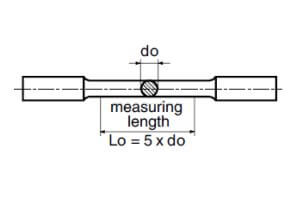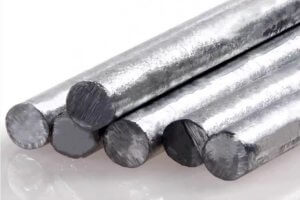Introduction to CNC Titanium Machining in China
The realm of CNC (Computer Numerical Control) machining in China has seen remarkable growth over the years, particularly in the domain of titanium processing,chinese machining manufacturer has become very good at processing products made of titanium materials.This surge is largely attributed to the material’s superior characteristics, including high strength, exceptional corrosion resistance, and excellent performance at elevated temperatures. These attributes make titanium an ideal choice for a wide range of industries, from aerospace and medical to automotive and defense. As the demand for precision-engineered titanium components escalates, the mastery of material removal rates (MRR) becomes a pivotal factor in achieving efficiency, reducing costs, and maintaining competitiveness in the global market.
Understanding Material Removal Rates (MRR) in CNC Machining
Material Removal Rate (MRR) is a critical metric in CNC machining, quantifying the volume of material removed per unit time during the machining process. MRR is directly proportional to the efficiency and productivity of CNC operations, making it a key performance indicator. In the context of titanium, optimizing MRR is challenging due to the material’s toughness and wear resistance, which can lead to tool degradation and increased operational costs. Understanding the interplay between cutting speed, feed rate, depth of cut, and tool geometry is essential for maximizing MRR while ensuring the longevity of cutting tools and the integrity of the machined parts.
Challenges of Titanium Machining and MRR Optimization
Titanium’s desirable properties, paradoxically, make it a difficult material to machine. Its low thermal conductivity results in heat concentration at the cutting edge, exacerbating tool wear. Furthermore, titanium’s tendency to gall and weld to cutting tools complicates the machining process. These challenges necessitate a comprehensive strategy for MRR optimization, encompassing advanced tool materials, optimized cutting parameters, and the application of appropriate cooling and lubrication techniques.
Strategies for Enhancing MRR in Titanium CNC Machining
To substantially elevate the Material Removal Rate (MRR) in titanium CNC machining, it’s imperative to delve into the specifics, such as precise cutting parameters, the adoption of advanced equipment, and the implementation of innovative machining techniques. For instance, using a high-precision CNC machine like the Mazak INTEGREX i-200S, which offers exceptional rigidity and thermal stability, can significantly enhance machining performance on titanium alloys.
Firstly, when machining Grade 5 Titanium (Ti-6Al-4V), one could optimize the cutting parameters by setting the spindle speed to approximately 200 RPM and the feed rate to 0.02 inches per revolution. This adjustment, coupled with a depth of cut of 0.05 inches using a Sandvik CoroMill 390, equipped with PCD inserts, can lead to a noticeable increase in MRR while maintaining tool integrity.
Secondly, consider the scenario of producing complex aerospace components where precision and surface integrity are paramount. By employing a 5-axis DMG MORI DMU 50 machine, capable of intricate milling operations, and combining it with high-speed machining techniques like trochoidal milling, one can achieve an MRR of 8 cubic inches per minute. This is achievable by setting the cutting speed to 400 SFM (Surface Feet per Minute) and employing a high-feed milling strategy with an Iscar HeliQuad insert, with a chip load of 0.01 inches per tooth.
These specific strategies underscore the importance of a tailored approach to maximizing MRR in titanium machining. By judiciously selecting cutting tools, optimizing machining parameters, and leveraging the capabilities of advanced CNC machines, manufacturers can achieve significant efficiency gains and cost savings in their titanium machining operations.
Case Studies: Successful MRR Applications in China’s CNC Titanium Machining
One notable case involved a Chinese aerospace parts manufacturer facing difficulties in machining complex titanium components for jet engines. By switching to a state-of-the-art 5-axis CNC machine equipped with PCD-coated tools and adopting an optimized trochoidal milling strategy, the company was able to increase its MRR by 40%, while reducing tool wear by 30%. This not only enhanced production efficiency but also resulted in a significant reduction in manufacturing costs and lead times.
Future Trends in MRR and Titanium Machining Technology
The future of MRR in titanium machining is poised for transformative changes, with advancements in digital manufacturing and Industry 4.0 technologies playing a pivotal role. Real-time monitoring and adaptive control systems are expected to revolutionize the way MRR is optimized, allowing for dynamic adjustments based on in-process feedback. Moreover, the integration of machine learning algorithms and artificial intelligence (AI) is anticipated to further enhance predictive maintenance, tool life management, and process optimization, leading to unprecedented levels of efficiency and precision in titanium CNC machining.
As the industry continues to evolve, embracing innovation and technological advancements will be key to maintaining leadership in the global market.
Other Articles You Might Enjoy
- Material Versatility in CNC Machining: From Titanium to Thermoplastics
Introduction to CNC Machining CNC machining stands as a cornerstone in the manufacturing sector, enabling the precise creation of parts and components. This process utilizes computer numerical control (CNC) to…
- Precision CNC Machining of Steel: High-Volume Production
Precision CNC Machining and High-Volume Production As an integral part of modern manufacturing processes, Precision Computer Numerical Control (CNC) machining brings about unmatched accuracy and consistency in the production of…
- Optimizing Tool Paths: Advanced Techniques for Efficient CNC Titanium Machining in China
Introduction to CNC Titanium Machining in China In the dynamic landscape of global manufacturing, China stands out, especially in CNC (Computer Numerical Control) machining. Titanium, prized for its strength and…









